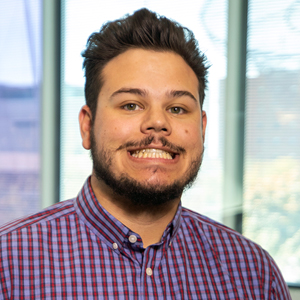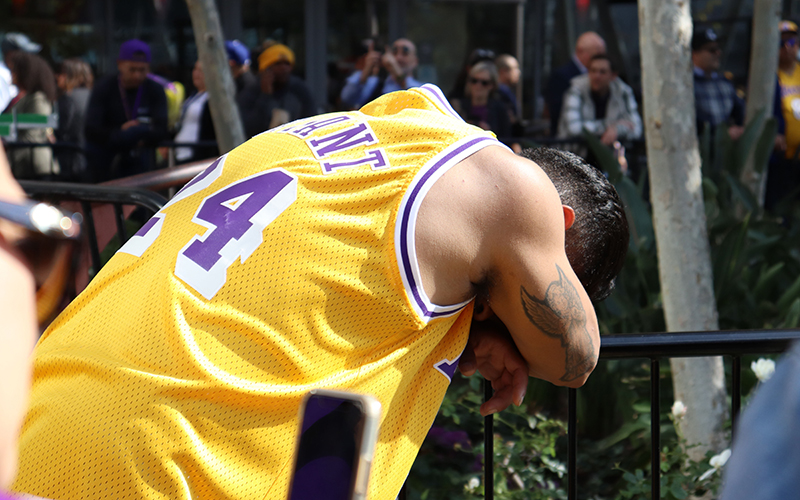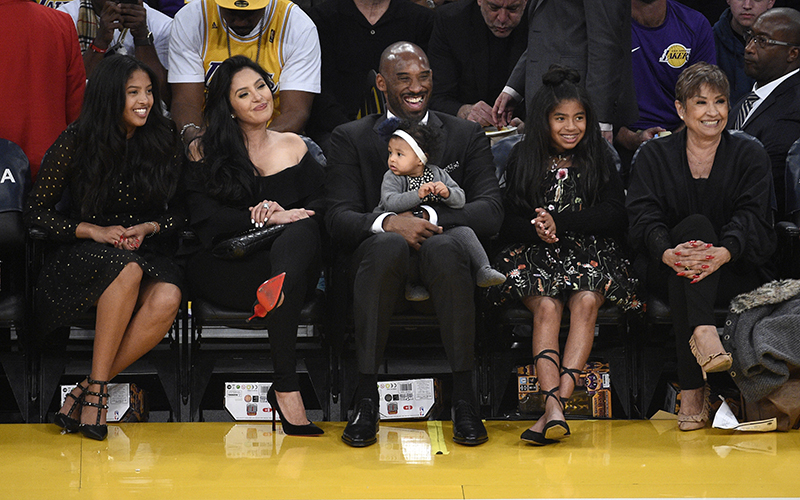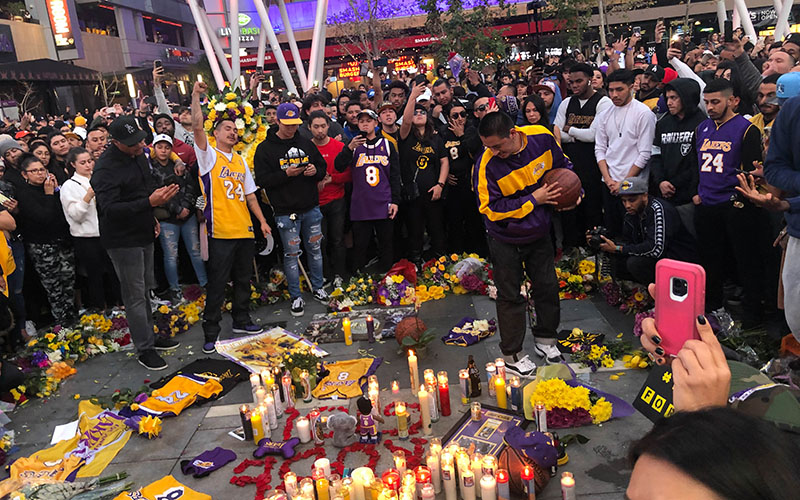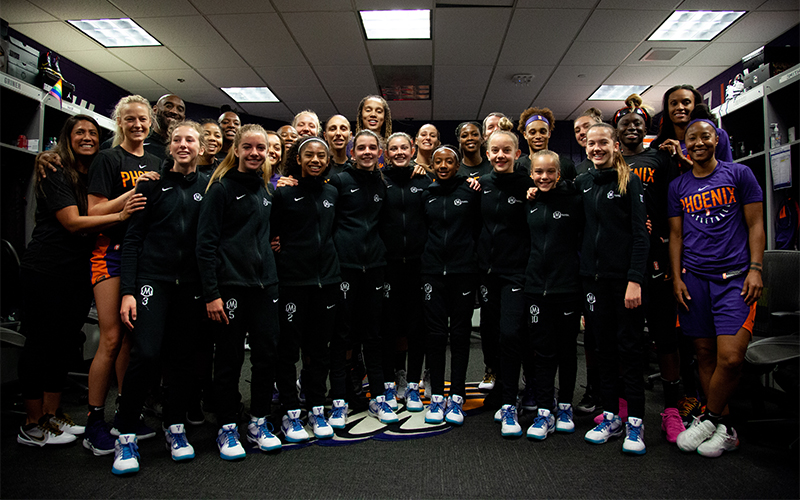PHOENIX – Megan Morris spent less than 10 minutes with Kobe Bryant, just enough time for him to make a dramatic impression.
It’s a common refrain for those who have met Bryant, who died Sunday in a helicopter crash in Southern California. Whether a student, a team executive or a reporter, those who crossed paths with the longtime NBA standout had a story. That’s especially true for many in Phoenix.
An Olympics encounter
When Morris heard the news of Bryant’s death, it sparked a question from her husband.
“Didn’t you interview him once?”
The inquiry sent Morris back to one of the most special moments of her life.
At the time, Morris was just a nervous 20-year-old journalism student at Arizona State’s Walter Cronkite School of Journalism and Mass Communication and on a coverage team for the London 2012 Summer Olympics. Greg Boeck, Morris’ professor, took the team to the Team USA basketball practice and the simple media availability became a story of a lifetime.

Fans left flowers and lighted candles near a mural in downtown Los Angeles on Jan. 27 to honor NBA legend Kobe Bryant. The five-time NBA champion died in a helicopter crash Jan. 26. (Photo by Nicholas Tirella/Cronkite News)
Boeck “guided me through a crowd of reporters, faces that I knew,” Morris said. “Finally, I was looking down, toe-to-toe with a pair of Nike shoes. I looked up and saw Kobe’s face. … Greg asked him to share some advice for me. He told me to follow my instincts and follow your own story, don’t chase after what everyone else does. As a young journalist that was really special to me. I carried that with me throughout my career.
“Going back to my first job application, I put the story I wrote about Kobe on every application I’ve had, even now that I’m not in the journalism field. Our meeting was super brief but it meant a lot to me. It’s something I’ll never be able to do again. You don’t know how special something is until it’s gone.”
1996 NBA Draft
The Suns never had Kobe Bryant on their roster, never knew what it felt to miss him due to injury or leave for another team. They certainly wanted to know that feeling heading into the 1996 NBA Draft. The high school standout from Pennsylvania had a handful of teams interested in his talents. The sample size for great careers from high school drafted players wasn’t large and that scared teams away. The Suns weren’t one of them.
“We liked him a lot. When he came in for a (predraft) workout, it was one of the best workouts we ever had with a player,” Jerry Colangelo, former Suns managing partner, said.
The Suns considered Bryant a special player and personality. Bryant’s noted competitiveness, what became known as his “Mamba Mentality,” were displayed in his predraft workout.
After his run through a drill, Bryant wanted to know his results. Not just adjectives describing his performance, but the numbers compared to everyone else. It was the third best time the Suns ever had in that particular drill. That wasn’t good enough.
Bryant did it again. He wanted the results. He had finished first. The next test his first trial finished top five. He did it again without a first-place finish, so he kept trying until he was first. Bryant made sure that once he left that gym, he made it known he wanted to be the best.
As the day of the 1996 NBA Draft approached, the Suns had their eyes locked at Bryant with the 15th pick. The Suns never got the chance, however. The Charlotte Hornets made their 13th overall pick available. Bryant ended up selected by the Hornets at 13, who later traded him to the Los Angeles Lakers for Vlade Divac, and the rest is history.
“We felt good that we could get him at 15 but the Lakers and the Divac trade changed everything. Had he been available, we would have definitely taken him,” Colangelo said.
The Suns to this day still can’t believe 12 teams passed on Bryant. Santa Clara’s Steve Nash became the Suns’ pick, a good second place in their mind. But the Suns felt as they knew how special Bryant would become.
2004 NBA Free Agency
Phoenix made another attempt to put Bryant in a Suns jersey in 2004. The organization had a ton of money, enough to make a run at their two top free agent targets –– Steve Nash, who had been traded to the Dallas Mavericks after being drafted by the Suns, and Kobe Bryant.
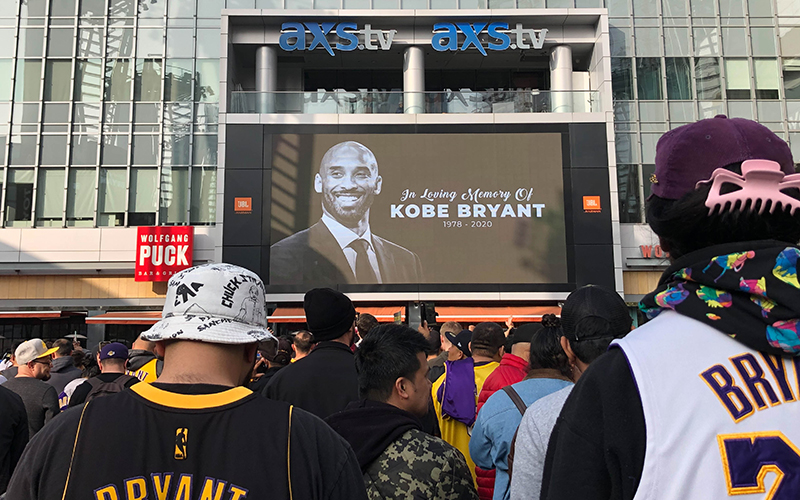
Fans gathered Sunday at Staples Center in Los Angeles and made makeshift memorials to honor former Lakers player Kobe Bryant. (Photo by Caroline Yu/Cronkite News)
Former Suns Vice President of Digital Jeramie McPeek helped design a 100-page coffee table style book unique for each player. Inside the book included a personal letter from Colangelo, a question and answer series about the roles Nash and Bryant would have with recently hired head coach Mike D’Antoni and photoshopped pictures of them in Suns attire and along with potential teammates Amar’e Stoudemire and Shawn Marion.
“I went to lunch with the team president at the time Bryan Colangelo, Mike D’Antoni and (Director of Player Personnel) David Griffin. I went to lunch with the three of them where we first talked to them about putting together these books,” McPeek said. “Obviously Kobe was one of the best players in the league, there was huge interest in the organization to be able to get him to Phoenix and to get Steve Nash for Phoenix.
“Just how incredible it would be to have the ultimate team-player and floor general in Nash. Then Kobe, the best scoring shooting guard in the NBA, great defensive player. … We did get one of the two but that was the ultimate goal was if you could get both how amazing it would be.”
Nash, who will forever be a sports legend for his Suns career, was once again just a piece to a plan that wanted Bryant. McPeek had met Bryant a few times throughout his career, including a 45-minute interview for HOOP Magazine. McPeek was as shocked as anyone when the news of Bryant’s death broke, but he was able to share his personal feelings about Bryant.
“I found him to be very friendly, personable and just a good guy to talk basketball,” McPeek said. “I kinda had a love-hate relationship with him. I grew up a Suns fan and worked for the Suns for 24 years. He was often on the other end of some crushing losses for our team. If we had got him to Phoenix in 2004 I would’ve been thrilled.”
The love-hate relationship shared by McPeek for Bryant is the same sentiment Bryant felt about the Suns.
“Yes, they stopped me from getting a championship — twice,” Bryant told ESPN in a 2016 interview. “Damn right I hated them. Absolutely. Raja (Bell) and Steve (Nash) and all of those good guys. Hated them. No question. But at the same time, I loved them, because they brought the best out of me and my teammates. So the relationship is a love-hate relationship because I hated the fact that they were that good and kept us from winning, but at the same time, I loved how good they were and I knew we had to be better. It’s a love-hate relationship.”
2006 Western Conference Playoffs
One particular moment as recalled by Paul Coro helped fire the rivalry between Bryant and Phoenix. Coro had seen plenty of Suns basketball during his time covering the team for The Arizona Republic from 2004 to 2016. His tenure included plenty of memorable moments from Kobe Bryant. The 37 points Bryant dropped to close out the 2010 Western Conference Finals against the Suns. His game-winning shot against the Suns in Game 4 of the First Round of the NBA Playoffs in 2006.
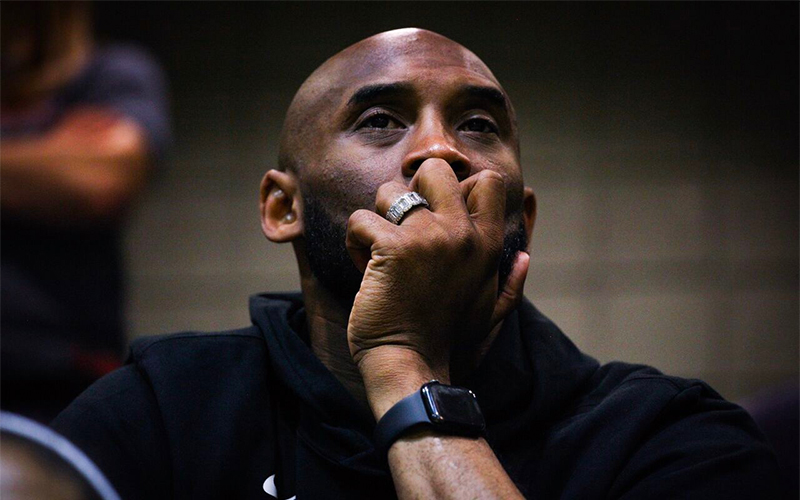
Kobe Bryant’s passion for women’s basketball led him to travel with his daughter, Gigi, as she played in numerous club tournaments. (Photo courtesy of Phoenix Mercury)
For every moment Sun fans wish to forget, it was Game 5 of that 2006 series they seem to enjoy the most in remembering Bryant. With the win in hand and a little over seven minutes left, Suns guard Raja Bell clotheslined Bryant as he drove into the lane.
“The game was winding down, then the whole storyline changed,” Coro said. “In one move, Raja took all the anger and angst out in one move for the Suns fanbase as Bryant was sent to the floor. Kobe was the player everyone loved to hate. Raja knew that he couldn’t back down from Kobe. Other players were certainly annoyed by (Kobe), and Raja did something about it.”
Seeing Bryant’s iconic stoic face and clenched fist after his game-winner in Game 4 left a bad taste in a lot of Suns fans’ mouths, especially being on the brink of elimination. And Bell took it into his own hands.
In a day that most people, sports fans in particular, will remember where they were when they found out about Bryant’s death, it’s the different stories that shape the impact Bryant’s life had on so many people.
